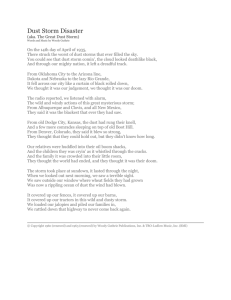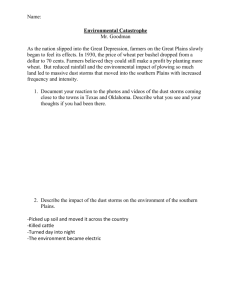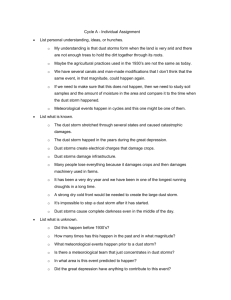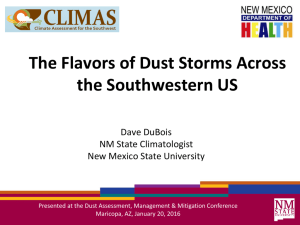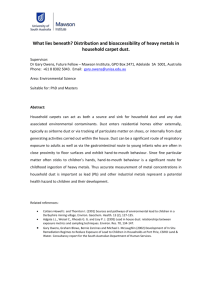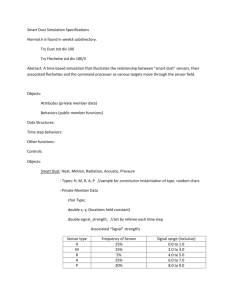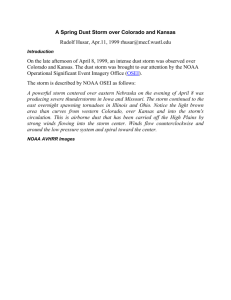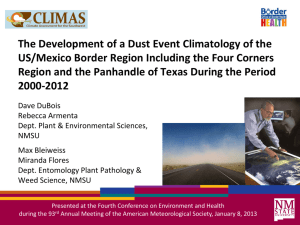Identification and Detection of 1 July 2008 Dust Storm with MODIS
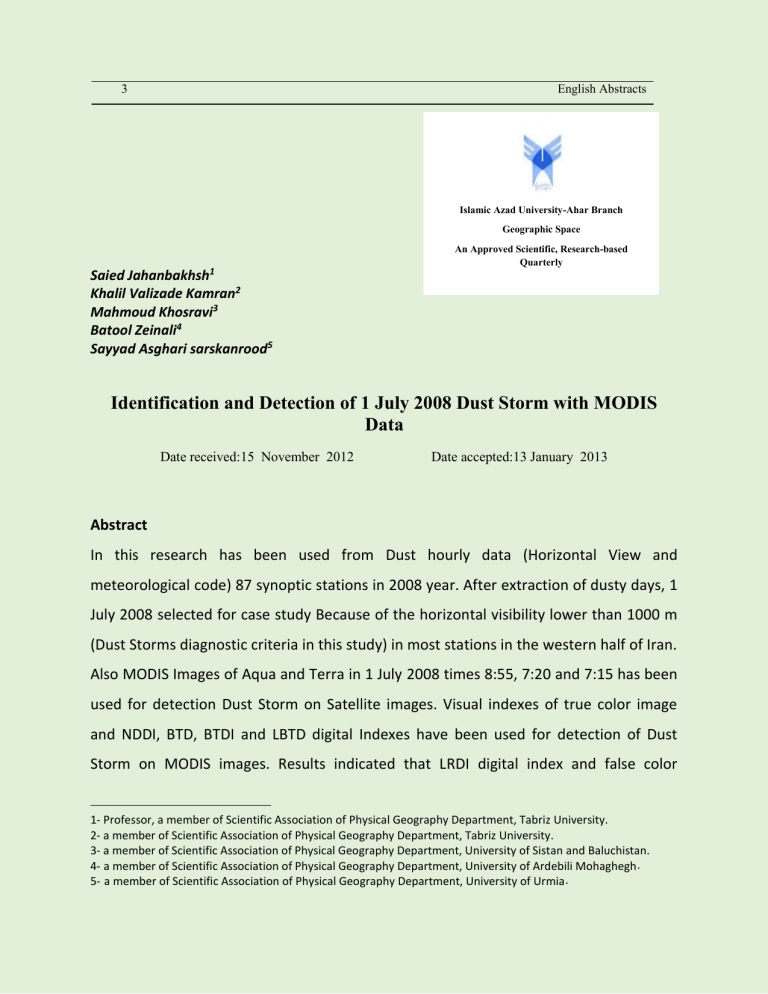
3 English Abstracts
Islamic Azad University-Ahar Branch
Geographic Space
An Approved Scientific, Research-based
Quarterly
Saied Jahanbakhsh 1
Khalil Valizade Kamran 2
Mahmoud Khosravi 3
Batool Zeinali 4
Sayyad Asghari sarskanrood 5
Identification and Detection of 1 July 2008 Dust Storm with MODIS
Data
Date received:15 November 2012 Date accepted:13 January 2013
Abstract
In this research has been used from Dust hourly data (Horizontal View and meteorological code) 87 synoptic stations in 2008 year. After extraction of dusty days, 1
July 2008 selected for case study Because of the horizontal visibility lower than 1000 m
(Dust Storms diagnostic criteria in this study) in most stations in the western half of Iran.
Also MODIS Images of Aqua and Terra in 1 July 2008 times 8:55, 7:20 and 7:15 has been used for detection Dust Storm on Satellite images. Visual indexes of true color image and NDDI, BTD, BTDI and LBTD digital Indexes have been used for detection of Dust
Storm on MODIS images. Results indicated that LRDI digital index and false color
1- Professor, a member of Scientific Association of Physical Geography Department, Tabriz University.
2- a member of Scientific Association of Physical Geography Department, Tabriz University.
3- a member of Scientific Association of Physical Geography Department, University of Sistan and Baluchistan.
4a member of Scientific Association of Physical Geography Department, University of Ardebili Mohaghegh .
5a member of Scientific Association of Physical Geography Department, University of Urmia .
4 English Abstracts composing have the higher resolution than the other indexes for detection of dust storms. According studied satellite images and other studies, Dust Storms source of western Iran is external that their mainis clouding deserts of Syria, Arabian, Northern
Africa and Iraq dried beds.
Keywords: Dust Storm, MODIS Aqua/Terra, Remote sensing, Iran.
